by Amineddoleh & Associates LLC | Sep 9, 2022 |
Our founder appeared on Al Jazeera to discuss the return of dozens of looted antiquities from the Metropolitan Museum of Art. She discusses the importance of conducting due diligence and proactively researching items in museum collections. The short news segment can be found HERE.
by Amineddoleh & Associates LLC | Sep 9, 2022 |
A New York bill signed into law on August 10, 2022 will require museums to provide a notice to viewers if works of art on display have links to the Holocaust. This groundbreaking and restorative legislation accompanies two other Holocaust-related bills signed into law: one aimed at increasing Holocaust literacy through curricula in educational institutions, and the other designed to increase pressure on banks that assess fees related to Holocaust reparations. All three bills work in concert to combat rising reports of antisemitism through these targeted cultural, economic, and educational channels.
Provenance
While other states are considering enacting similar legislation to increase Holocaust literacy in schools, New York stands apart in dictating these trailblazing requirements for museums to publicly acknowledge the devastating conditions under which they may have acquired certain works. The origin of a work of art is known as its provenance, and its applicability extends beyond Holocaust-era stolen works (you can access our blog post on the fight to prove provenance for Mexican antiquities here). Provenance is important not only to establish a chain of title when purchasing a work, but also to determine its cultural, political, and financial value.
Proving provenance is no small task, particularly when items have been stolen. This task is rendered even more difficult when the theft occurred during or shortly after the chaos of war. In the case of works stolen during the Holocaust, both these hurdles were present, with the added complications of global economic upheaval, unimaginable human suffering, an overwhelming refugee crisis, and the genocide of the class of people from whom the works were primarily stolen. The process of proving provenance for works stolen during WWII typically involves the heirs of deceased Jewish family members bringing claims to museums in hopes of establishing legitimate ownership of works held by a museum through whatever documents were salvaged after the war. This can include references in letters and diaries, family photographs, and bills of sale. The museum then has its own systems to determine the legitimacy of such claims. If provenance is not proven after the museum’s internal investigation, the museum is then able to claim that it “legally” retains the artwork.
 Of course, this is devastating news to families seeking to reclaim an important piece of family heritage. If a museum denies heirs’ claims, they may proceed to file litigation. One high-profile example is Gustav Klimt’s portrait of Maria Altmann, titled Woman in Gold. Another is the ongoing Cassirer case, involving the Museo Thyssen-Bornemisza in Madrid. However, these cases often take years – if not decades – to resolve, leaving the artwork in legal limbo until a final decision or settlement is made.
Of course, this is devastating news to families seeking to reclaim an important piece of family heritage. If a museum denies heirs’ claims, they may proceed to file litigation. One high-profile example is Gustav Klimt’s portrait of Maria Altmann, titled Woman in Gold. Another is the ongoing Cassirer case, involving the Museo Thyssen-Bornemisza in Madrid. However, these cases often take years – if not decades – to resolve, leaving the artwork in legal limbo until a final decision or settlement is made.
It is important to keep in mind that Gov. Hochul’s new law does not specifically address the need to return works to individual families (restitution). However, it does bring to light the importance of acknowledging a work’s provenance as an important cultural indicator of the suffering of a class of people, even if it does not repair the harm done to individual families. Thus, the heirs or successors-in-interest of a dispossessed owner will need to rely on alternative avenues to recover their property.
Restitution
The effect of the public notice requirement speaks to justice outside the courts that can be accomplished through the voluntary restitution of stolen artwork. When restitution is carried out by leading art institutions as part of a larger “duty to remember,” it aids in cultivating peace and strengthening non-legal measures of restitution. Furthermore, it sets a positive example for other art world participants. While public art institutions have often not returned potentially looted art to the heirs of their original owners when proof of theft is not evident, many have expressed a desire to not retain stolen work. Even so, museums as a whole tend to be reluctant to part with prized pieces, particularly when the works claimed as stolen are the very ones that draw visitors to their galleries.
Case law
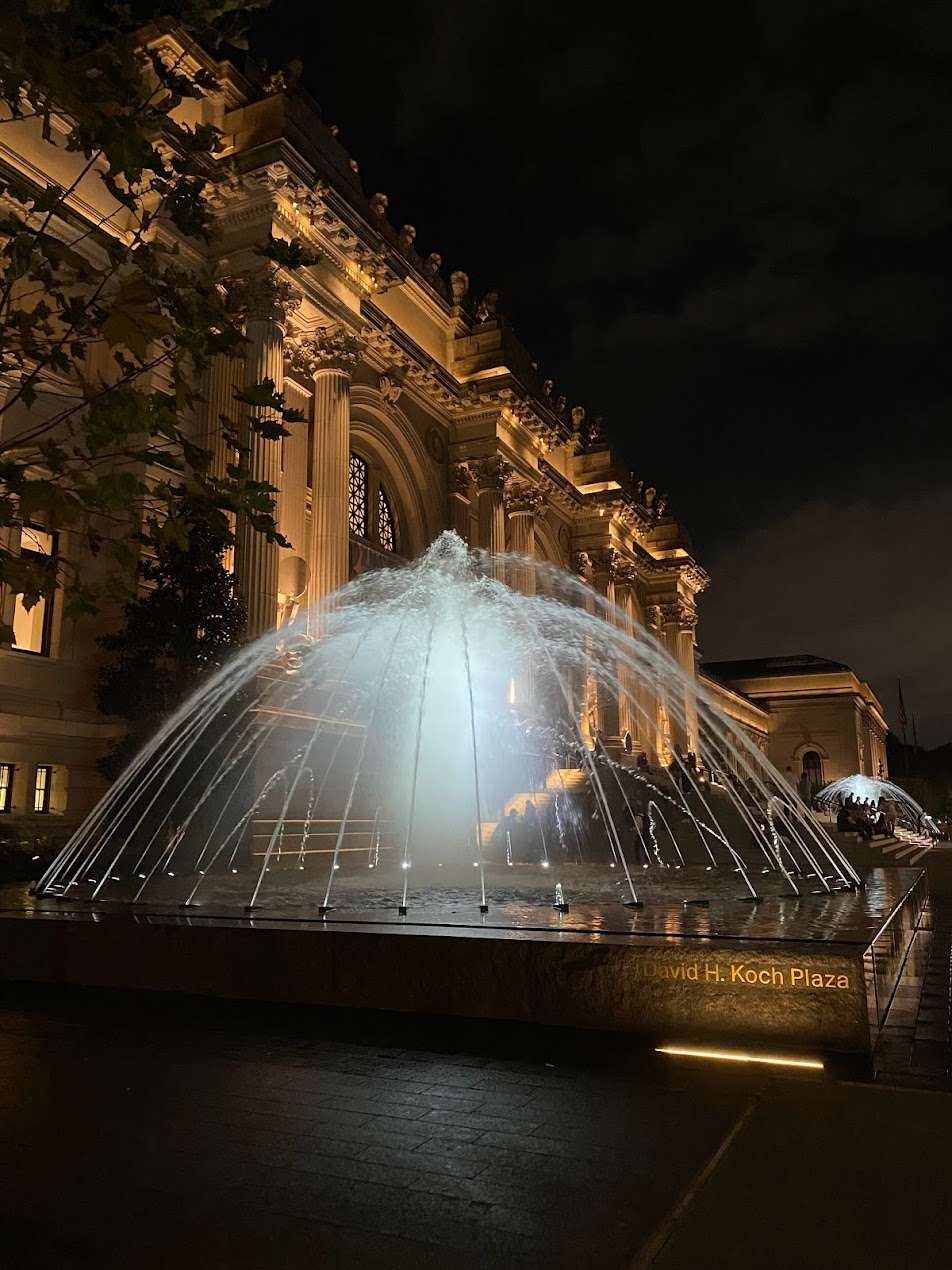 Decades of case law in the U.S. indicate the difficulties facing claimants. Recent cases against New York museums resulted in wins for the institutions, yet not due to the merits of each respective case. Rather, the Museum of Modern Art squeaked out wins through a confidential settlement, and defended itself by claiming that the statute of limitations had run. In another case, the Metropolitan Museum of Art made the affirmative defense of laches, under the theory that claimants made an unreasonable delay in bringing suit against the museum for a valuable painting by Picasso.
Decades of case law in the U.S. indicate the difficulties facing claimants. Recent cases against New York museums resulted in wins for the institutions, yet not due to the merits of each respective case. Rather, the Museum of Modern Art squeaked out wins through a confidential settlement, and defended itself by claiming that the statute of limitations had run. In another case, the Metropolitan Museum of Art made the affirmative defense of laches, under the theory that claimants made an unreasonable delay in bringing suit against the museum for a valuable painting by Picasso.
Even the most recent ruling in the Guelph Treasure litigation did not fare well for the claimant heirs. The Guelph Treasure litigation follows claims brought by the heirs to a priceless haul of German ecclesiastical relics, currently on display in the Bode Museum in Berlin. The heirs claim that the relics were sold under duress to the Nazi government in 1935 for less than their market value. The museum’s foundation argues that the sale was voluntary, and, further, was not made under the pressure of Nazi occupation in Germany.
Last month’s ruling by the District Court for the District of Columbia dismissed the case on jurisdictional grounds, stating that the Foreign Sovereign Immunity Act (FSIA) blocked suit of Germany in U.S. court (this confirms the holding by the U.S. Supreme Court that remanded the matter to the district court). The claimants relied on an exception to the FSIA which prohibits expropriations that violate international law, arguing that dispossession in cases of genocide qualified for this rule. However, the court found that the claimants failed to prove that their ancestors were not German nationals at the time of the sale, meaning that only domestic law – not international law – was involved. As such, U.S. courts do not have subject matter jurisdiction over the matter, meaning that U.S. courts are unable to make determinations on German domestic law.
The district court’s decision does not eliminate the possibility of appeal or further pursuit of the Guelph Treasure through alternate measures in Europe. However, claimants often prefer to file disputes in the U.S. because American courts have historically been more lenient for Holocaust-related actions, particularly on statute of limitations grounds. In most European countries, causes of action for property stolen or lost during WWII have already expired. For example, Poland recently passed legislation that reduced the statute of limitations on all restitution cases to 30 years from the theft’s occurrence; this effectively bars all Holocaust restitution claims.
It is important to note that not all hope is lost. Some museums have, on their own initiative, refused to turn a blind eye to the problematic origins of some of their beloved works. The North Carolina Museum of Art, for example, returned a 16th-century painting by Lucas Cranach the Elder to an Austrian family after learning that the work was stolen by Nazi officials in 1940. And the Museum of Fine Arts in Boston (MFA) recently returned View of Beverwijk by Salomon van Ruysdael to the descendants of a Jewish art collector and politican, from whom the work was stolen by Nazi forces.
In the case of the return of View of Beverwijk, the museum and the claimant family each had a role in making the restitution possible. First, the MFA received new provenance information regarding the work and updated its museum website. The family’s lawyer then used that new information to provide a missing link to prove their ancestor’s possession.
It was truly a moment of teamwork, and sets an example for other museums seeking to actively become part of the solution in remedying the trauma of the Holocaust. The MFA’s curator for provenance, Victoria Reed, stated (upon the return), “To be able to redress that loss, even in a tiny way, I think, is gratifying. And it certainly is part of what we should be doing as a museum.”
At the same time, voluntary returns of artwork by museums are few and far between, and the battle for individuals seeking to prove provenance remains a lengthy, cumbersome, expensive, and uphill battle. In light of these hurdles, requiring museums to publicly notify guests of the potentially tragic origins of works they have on display is a start. Doing so gives voice to the people who were silenced under the traumatic and systematic genocide of the Holocaust and lost their homes, families, and ties to their history and culture.
New York’s actions, in this sense, are an act of strength in the face of the general reluctance by museums to acknowledge that there are times in which the display of art may perpetuate war crimes. As Maya Angelou put it, “History, despite its wrenching pain, cannot be unlived. But if faced with courage, need not be lived again.”
by Amineddoleh & Associates LLC | Sep 1, 2022 |
A visit to the National Archaeological Museum of Taranto (Museo Archeologico Nazionale di Taranto, MArTA) reminded me why I love museums so much. It is an inspiring place, a valuable educational resource, and an underappreciated repository for art and heritage.
Taranto, Italy
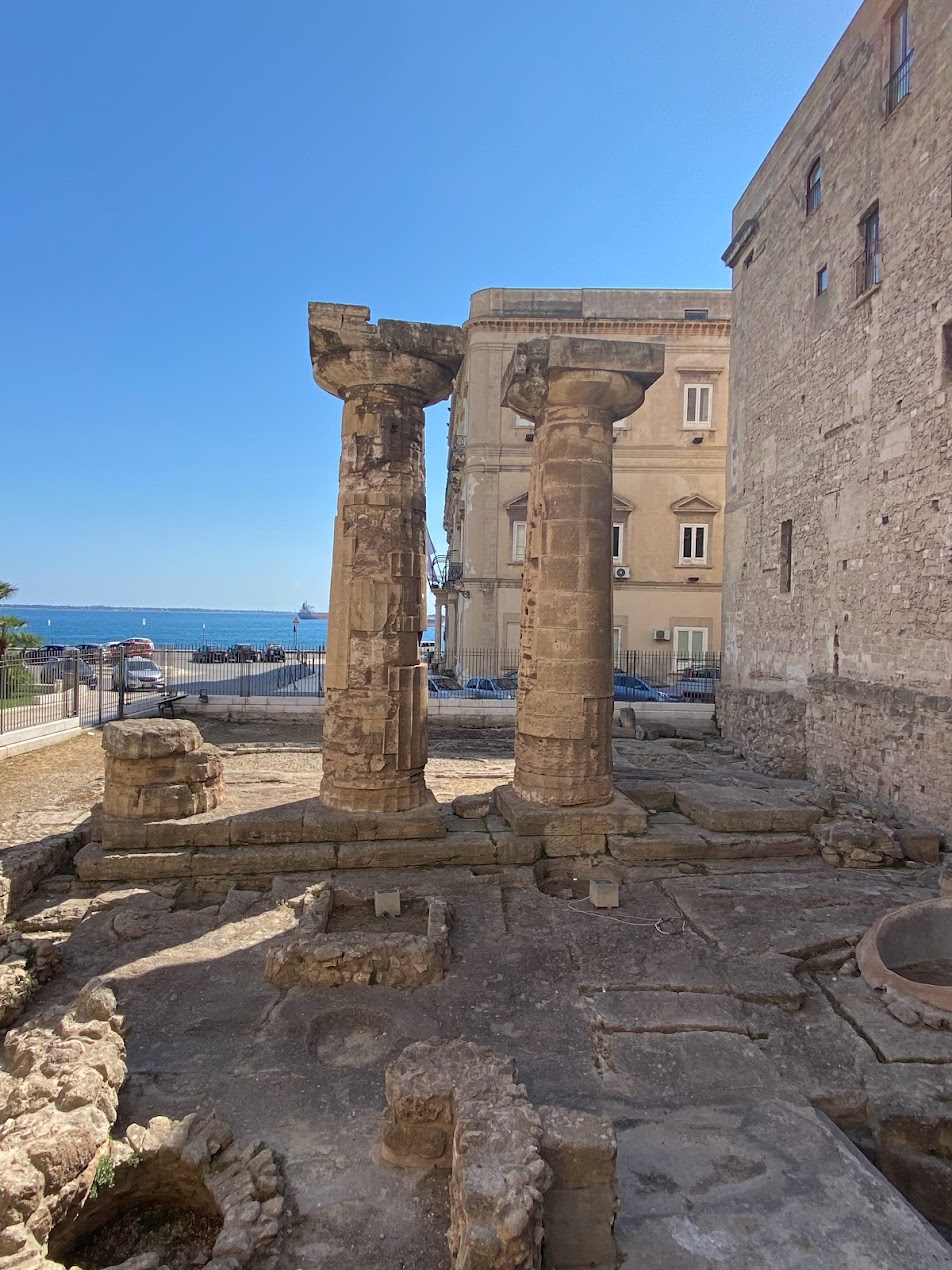
Greek ruins (Temple of Poseidon)
MArTA is located in Taranto, a city located along the inside of the “heel” of Italy in the region of Puglia. It was founded by Spartans in 706 BC, and it became one of the most important cities in Magna Graecia (the Roman-given name for the coastal areas in the south of Italy — Calabria, Apulia, Basilicata, Campania and Sicily — heavily populated by Greek settlers). Two centuries after its founding, it was one of the largest cities in the world with a population of around 300,000 people. Taranto (called Tarentum by the Ancient Romans) was subject to a series of wars, culminating in its fall to Rome in 272 BC. The city fell to Carthaginian general Hannibal during the Second Punic War, but was recaptured (and subsequently plundered) by Rome in 209 BC. The following centuries marked the city’s decline.
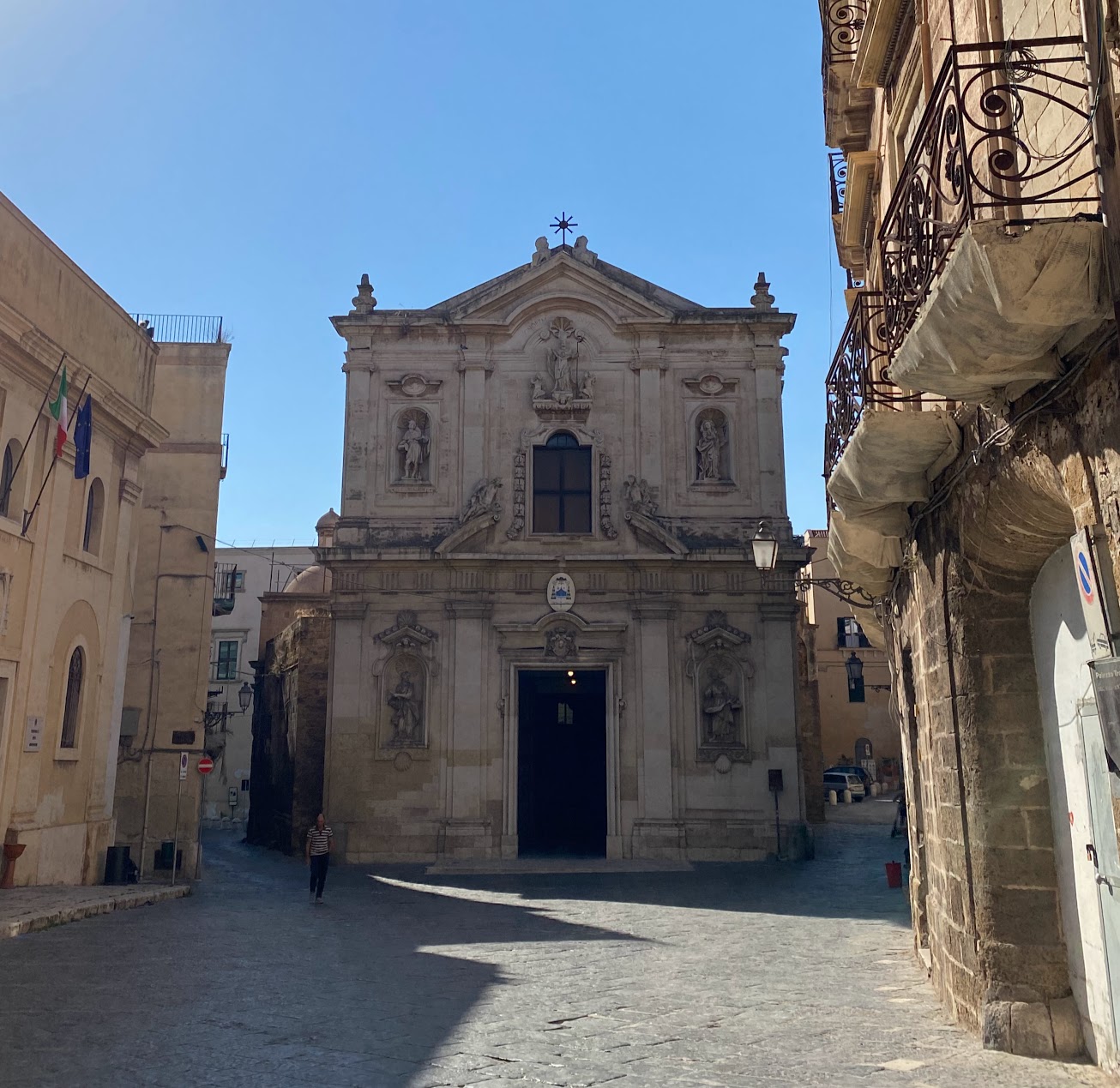
Cathedral of San Cataldo
Taranto’s mix of architecture and rich cultural heritage is due, in part, to subsequent changes in leadership between the 6th and 10th centuries AD, during which time it was ruled by diverse groups: Goths, Byzantines, Lombards, and Arabs. Later, during the Napoleonic Wars in the 19th century AD, the city served as a French naval base, but it was ultimately returned to the Kingdom of Two Sicilies for a few decades before it officially became part of the Republic of Italy in 1861.
Due to its strategic location on the inlet of the Gulf of Taranto, the city has great naval importance. Taranto served the Italian navy during both World Wars. As a result, it was heavily bombed by British forces in 1940 (the bombing of Taranto and was even noted to have “set the stage for the Japanese attack on Pearl Harbor” the following year). The city was also briefly occupied by British forces during WWII.
Evidence of the city’s various iterations is evident throughout its streets with impressive cultural sites, including the Greek Temple of Poseidon, the Spanish Castello Aragonese (built in 1496 for the then-king of Naples, Ferdinand II of Aragon), and the 11th century Cathedral of San Cataldo (Taranto Cathedral), where the remains of the city’s patron saint, Saint Catald, lie (he is believed to have protected the city against the bubonic plague). More recent architectural gems include Palazzo Galeota and Palazzo Brasini.
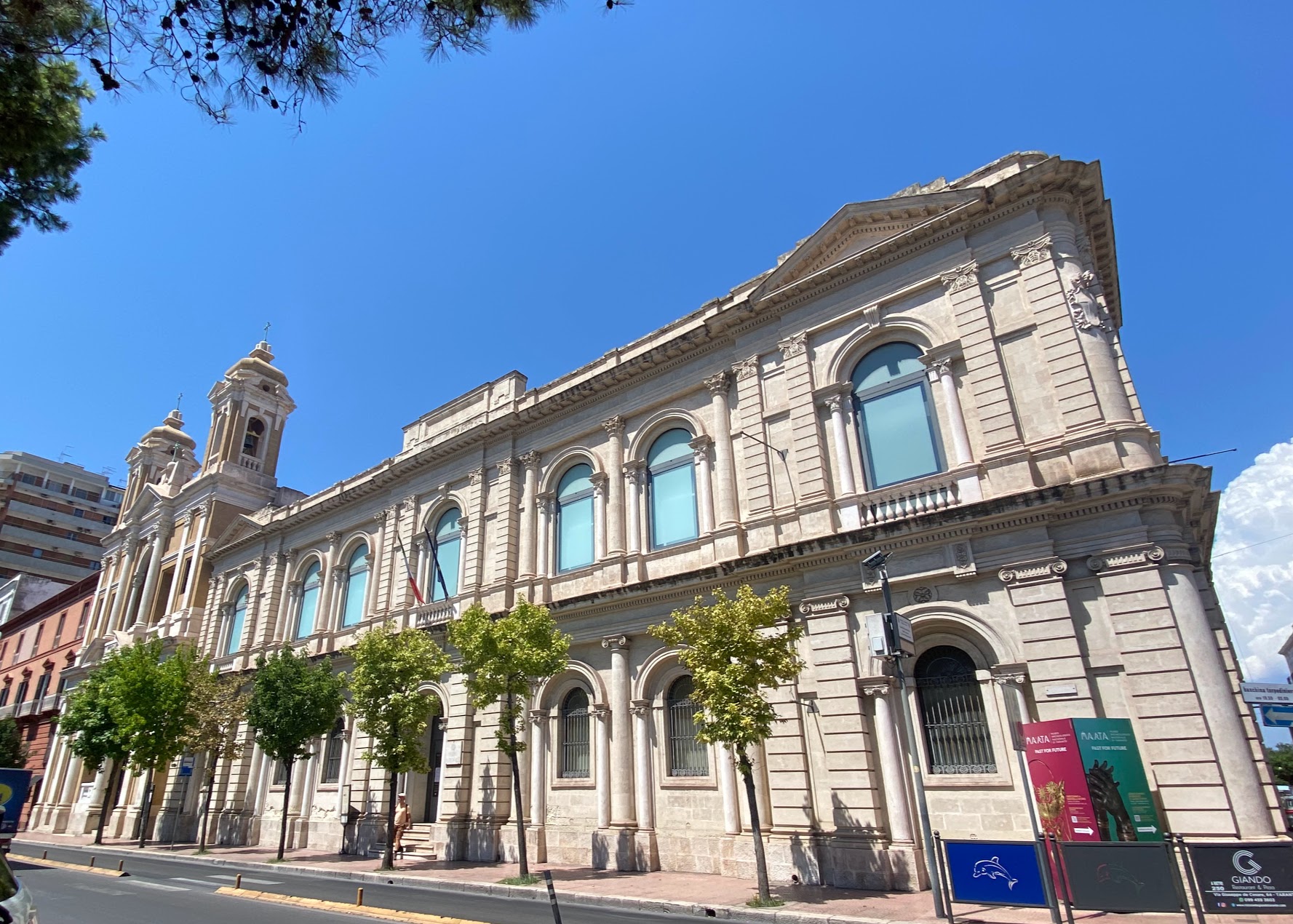
Museo Archeologico Nazionale di Taranto
Museo Archeologico Nazionale di Taranto (MArTA)
Like the city where it is located, MArTA is a rich institution full of incredible treasures. Last month, I had the opportunity to visit MArTA in person. Sadly, the museum, and the city itself, tend to fall under the radar of tourists. It is unfortunate that this site escapes attention, because both Taranto and its vaunted museum are incredible.
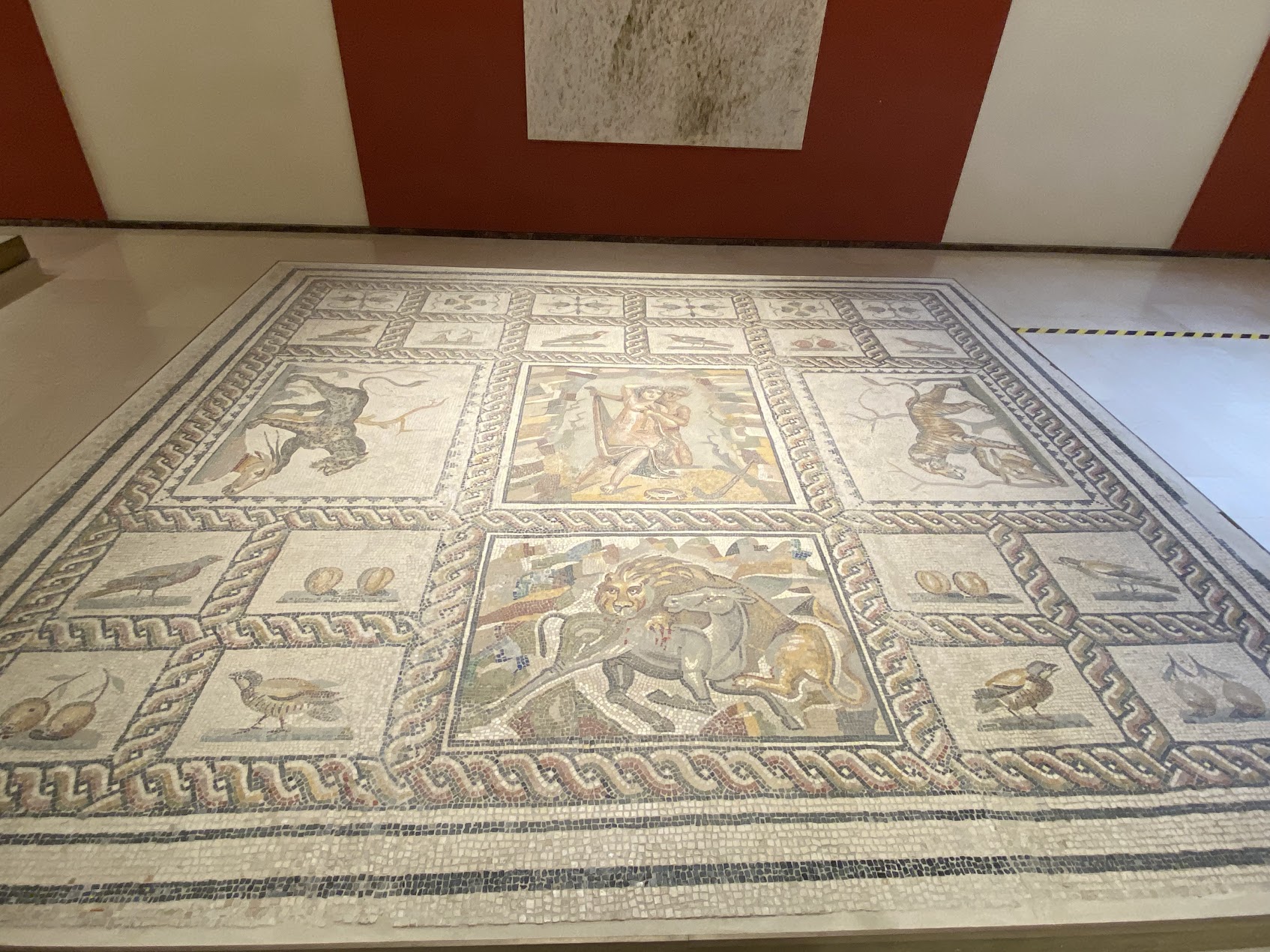 MArTA is one of Italy’s national museums. It was founded in 1887, and is housed on the site of both the former Convent of Friars Alcantaran and a judicial prison. Although most architectural structures from the Greek era in Taranto did not stand the test of time, archaeological excavations have yielded a great number of objects from Magna Graecae. This is due to the fact that Taranto was an industrial center for Greek pottery during the 4th century BC. As such, MArTA’s collection is impressive, displaying one of the largest collections of artifacts from Magna Grecia. Besides its rich holdings, this museum is unforgettable because of the ways in which it fulfills its cultural and educational purpose. The museum is arranged and curated along an “exhibition trail” so as to present visitors with a timeline of the city’s history. The displays move through time from the city’s prehistoric era to its Greek and Roman past and its medieval and modern history, in addition to integrating objects from outside Taranto that exemplify its location as a center of trade (including an exquisite statue of Thoth, the Egyptian god of scribes and writing). Toward the end of the trail, visitors are also confronted with information about the modern-day looting of artifacts and the work done to protect the city’s cultural heritage (more on that below).
MArTA is one of Italy’s national museums. It was founded in 1887, and is housed on the site of both the former Convent of Friars Alcantaran and a judicial prison. Although most architectural structures from the Greek era in Taranto did not stand the test of time, archaeological excavations have yielded a great number of objects from Magna Graecae. This is due to the fact that Taranto was an industrial center for Greek pottery during the 4th century BC. As such, MArTA’s collection is impressive, displaying one of the largest collections of artifacts from Magna Grecia. Besides its rich holdings, this museum is unforgettable because of the ways in which it fulfills its cultural and educational purpose. The museum is arranged and curated along an “exhibition trail” so as to present visitors with a timeline of the city’s history. The displays move through time from the city’s prehistoric era to its Greek and Roman past and its medieval and modern history, in addition to integrating objects from outside Taranto that exemplify its location as a center of trade (including an exquisite statue of Thoth, the Egyptian god of scribes and writing). Toward the end of the trail, visitors are also confronted with information about the modern-day looting of artifacts and the work done to protect the city’s cultural heritage (more on that below).
Amongst other treasures in MArTA are beautifully preserved mosaics, ornate golden jewelry, and ancient gold-covered snake skins. Another museum highlight are the informative displays positioning objects in creative contexts. For example, some objects are displayed along with photographic evidence and documentation about their excavation.
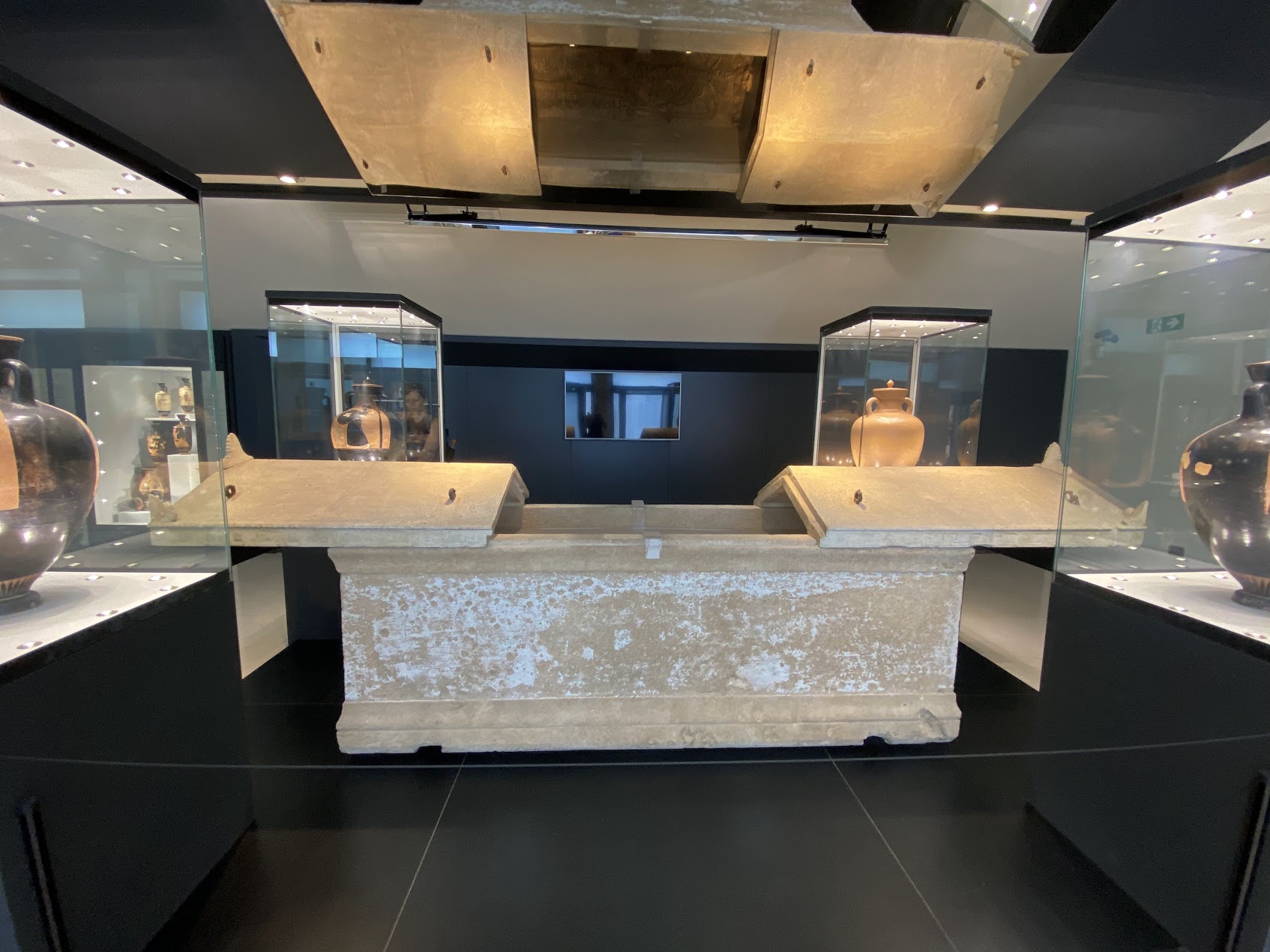
Tomb of the Athlete
The museum presents objects in beautiful vitrines. Some of the highlights on the first floor include thematic displays, such as a wall depicting Medusa’s face on antefixes found in Taranto. The curation includes information about the figure of Medusa in mythology and details on how her portrayal evolved over time. Another engaging display involves #italianmuseums4olympics, the Ministry of Culture’s campaign to support Italian sport and culture during the Olympic games. That particular display includes the sarcophagus of an athlete from Taranto, complete with amphorae found in his tomb that include images of athletic competitions, celebrating Italy’s long tradition of participating in the Olympics since antiquity.
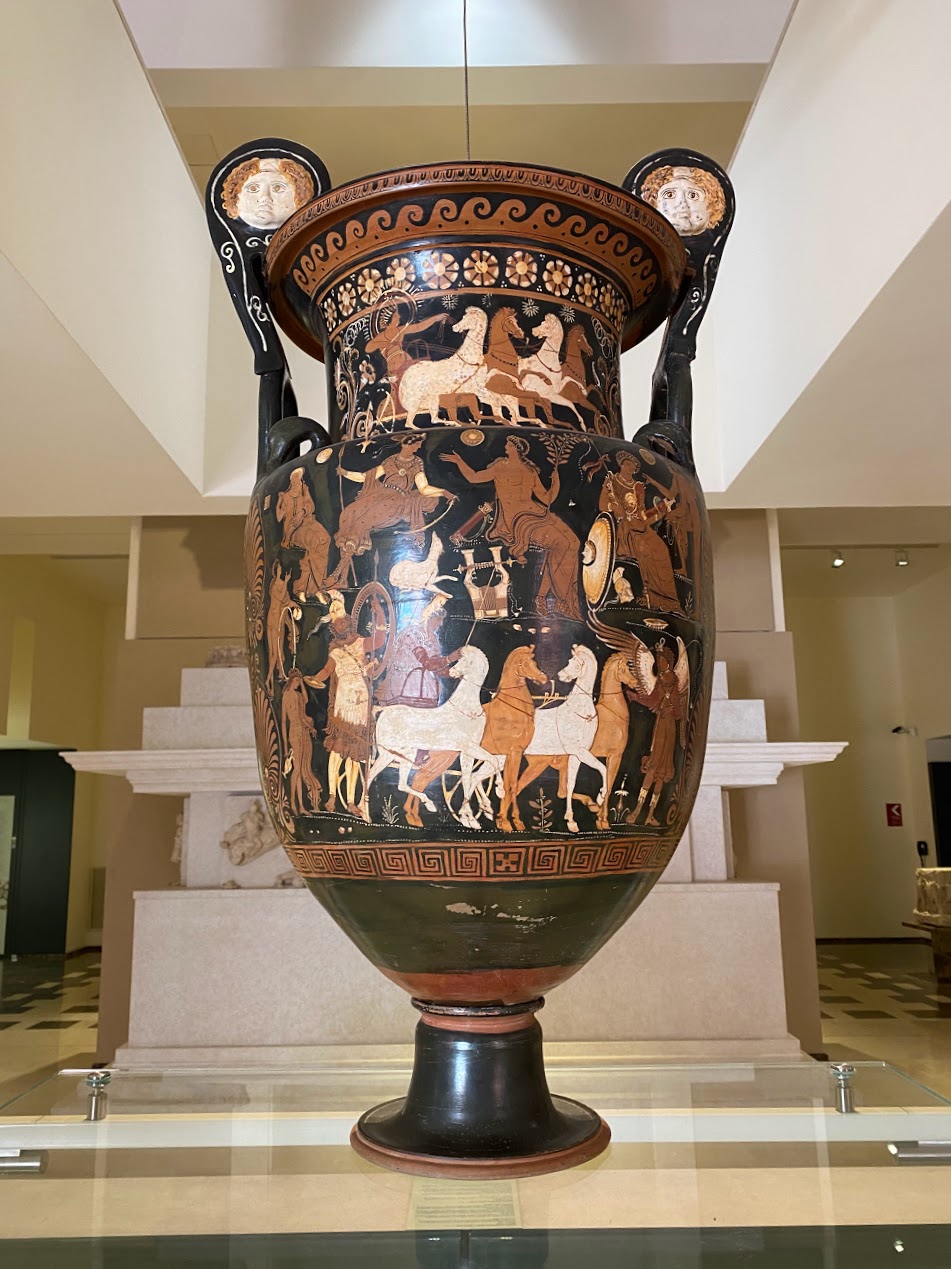
An Apulian krater by the Darius painter returned from the Cleveland Museum of Art in 2009
Looting of Objects on Display
As visitors enter the next floor of the museum’s route, they are confronted with a large restituted antiquity. A large Apulian krater by the Darius painter was returned to Italy in 2009 from the Cleveland Museum of Art after it was recovered by the Carabinieri’s TPC (the nation’s famed “Art Crime Squad”). The work was among fourteen artifacts returned from the Ohio museum after a two-year negotiation resulting from the investigation of a looting network run by Giacomo Medici and Gianfranco Becchina, two well-known dealers of looted materials who sold antiquities at auction and through dealers to supply coveted objects to collectors and museums around the world.
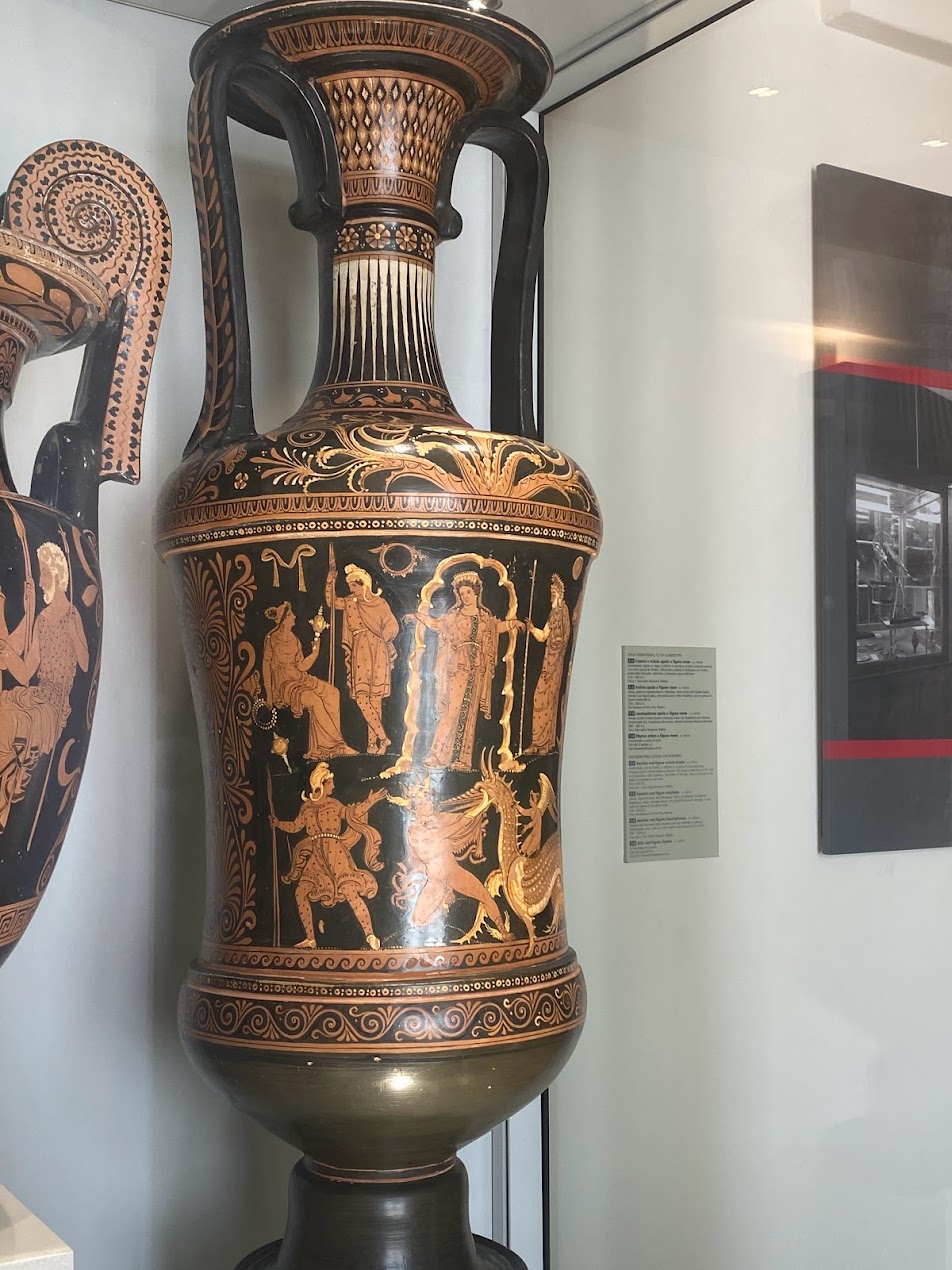
Loutrophoros restituted by the J. Paul Getty Villa in Malibu in California
MArTA also acknowledges some of the people responsible for the development of its exquisite collection, including past directors and donors. The displays note that the illicit or unknown sale of antiquities has led to the loss of knowledge about their historical and cultural value (when artifacts are illicitly excavated and divorced from their contexts, valuable information is lost in the process). However, the development of patrimony laws has allowed the Italian government to control more of the archaeological discoveries taking place, and other legislation has also encouraged collectors to donate their property to the museum and Italian State. The display also notes the important work by law enforcement and its success in having works repatriated to Italy, as well as its success in confiscating looted artifacts from private owners and collectors during the 20th and 21st centuries in Italy. Part of this display features works returned from major museums abroad, including the Museum of Fine Arts in Boston, the Getty Museum in Malibu, the Cleveland Museum of Art, and the Metropolitan Museum of Art in New York.
Labels and Information
The labels and information offered to visitors at the museum is exceptional, providing valuable information about the historic significance of items on display. Clearly, the museum places great importance on provenance, providing detailed information on where objects were excavated (this information includes exact find spots, with cross streets included for some of the objects), how they entered the museum’s collection, and ways in which the museum has evolved over the decades. Additional information is available to visitors about looting and criminal acts related to the objects, providing useful context.

Copy of the Goddess on Her Throne (the original is in Berlin)
One of the first objects to greet visitors upon their entry is a copy of a goddess on her throne. The original 5th century BC statue is “considered one of the greatest artworks from Magna Graecia.” It was found in 1912 in Taranto, but illegally exported out of Italy. It was then put on the Swiss art market, and finally purchased by the German government. It is currently on display at the Altes Museum in Berlin. Information like this is valuable, because it forces visitors to confront the political, societal, and cultural pressures facing museums, as well as the challenges and realities of the art and antiquities markets. It also provides a practical example of how works can wind up in international museums divorced from their original historical and cultural context.
As the museum’s website states, “The Museum also lends artefacts to other museums to allow global citizens to enjoy. We are aimed at providing first-hand information to all of our visitors so that they understand Europe’s prehistoric period.”
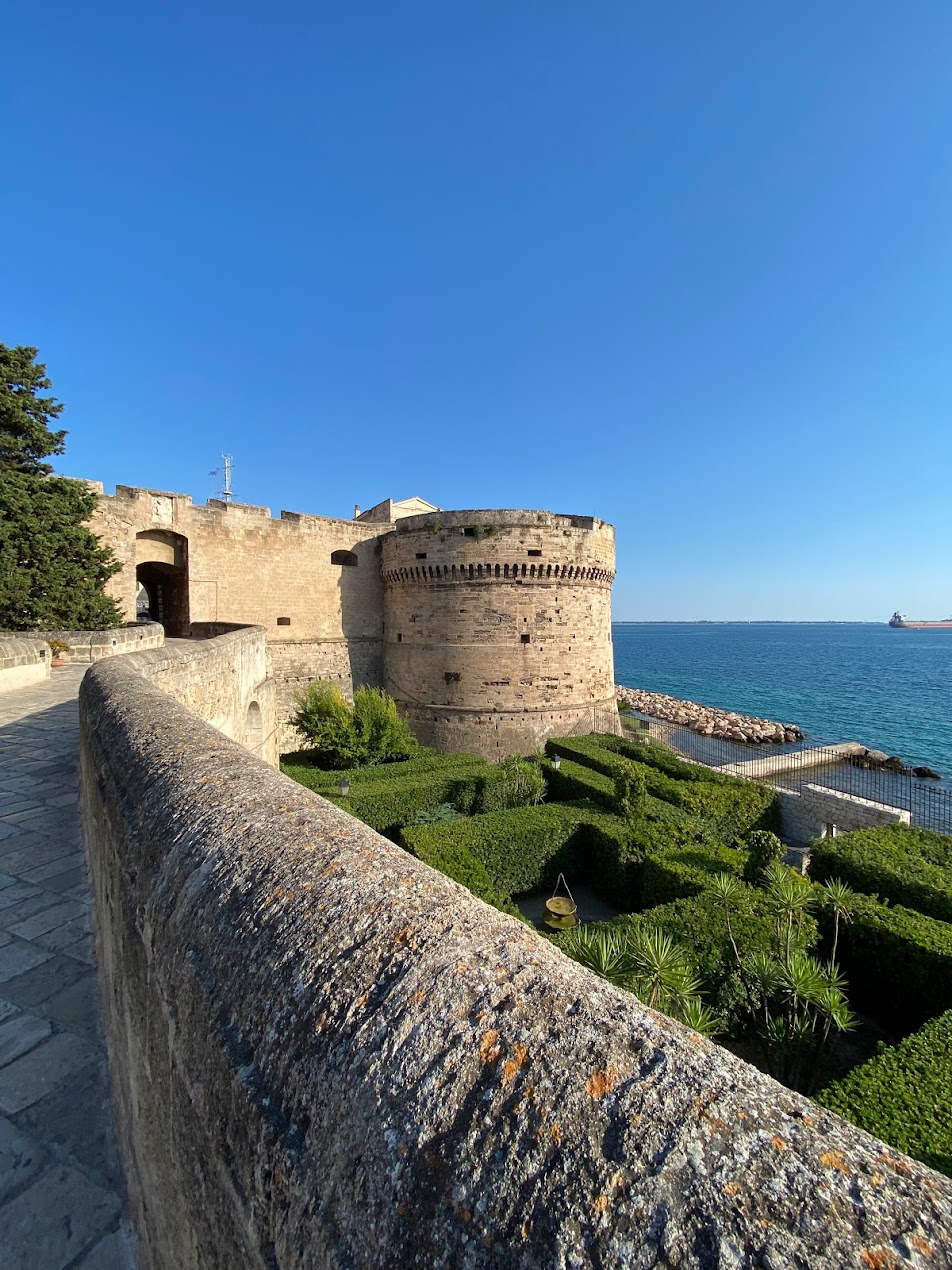
Castello Aragonese
A visit to this museum, and the gorgeous city of Taranto, with its sweeping coastal views, its rich cultural history, and its stunning architectural masterpieces, is essential for anyone visiting Puglia.
Copyrights in all photographs in this post belong to Leila Amineddoleh
ADDITIONAL PHOTOS
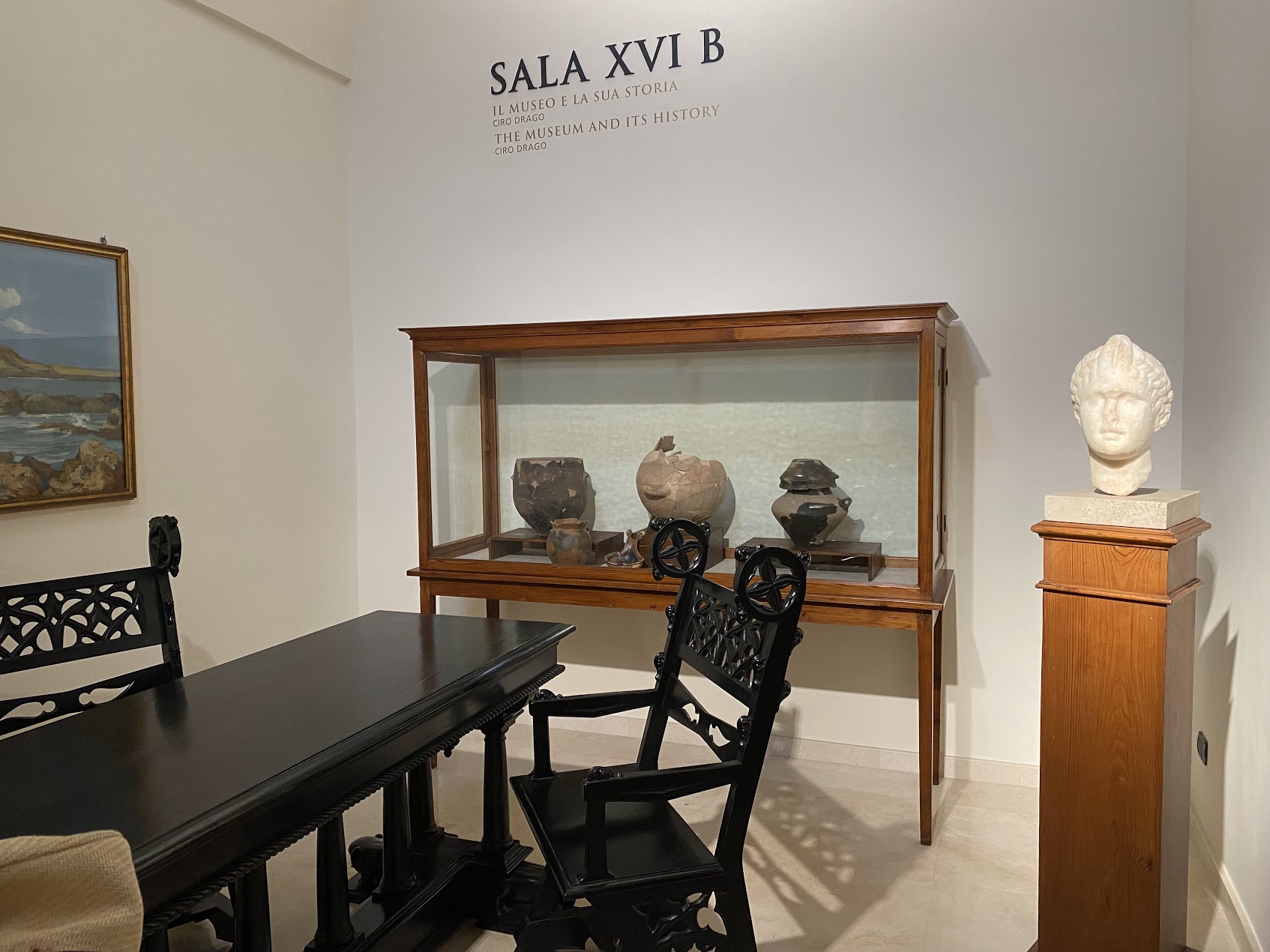
Objects from the museum’s early collection
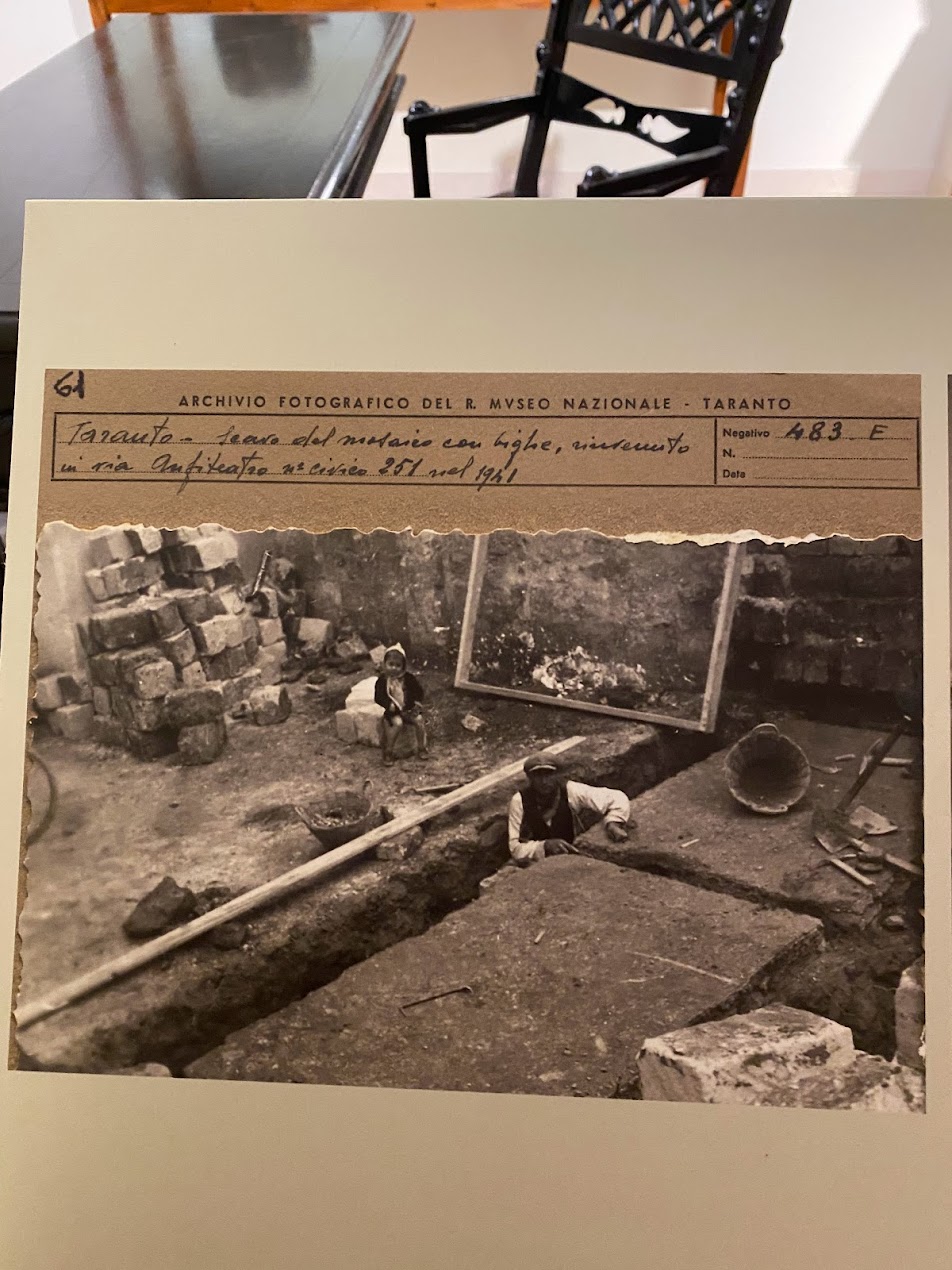
Documentation of excavations
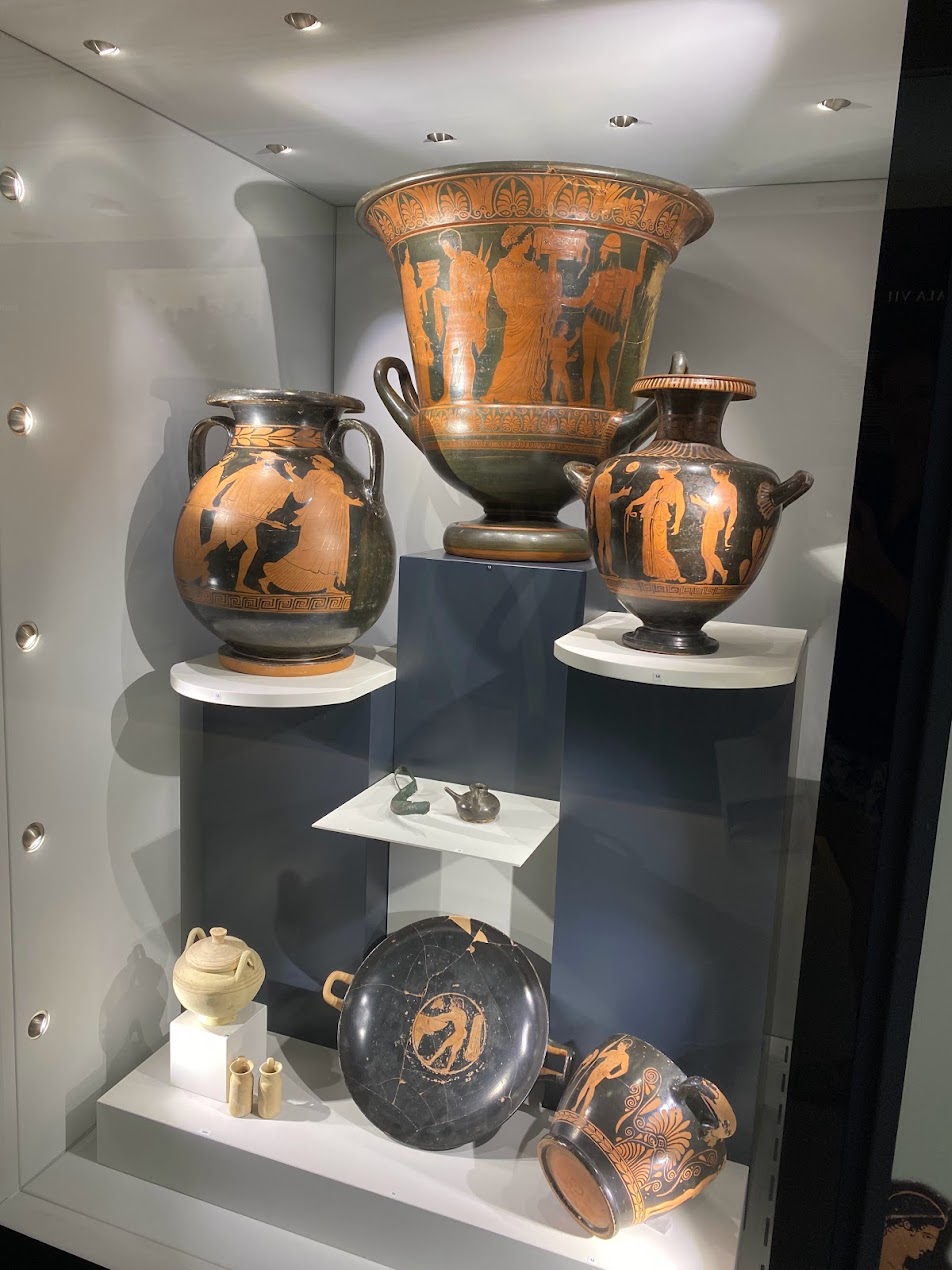
Vitrine (provenance information for each object is provided in a side panel)
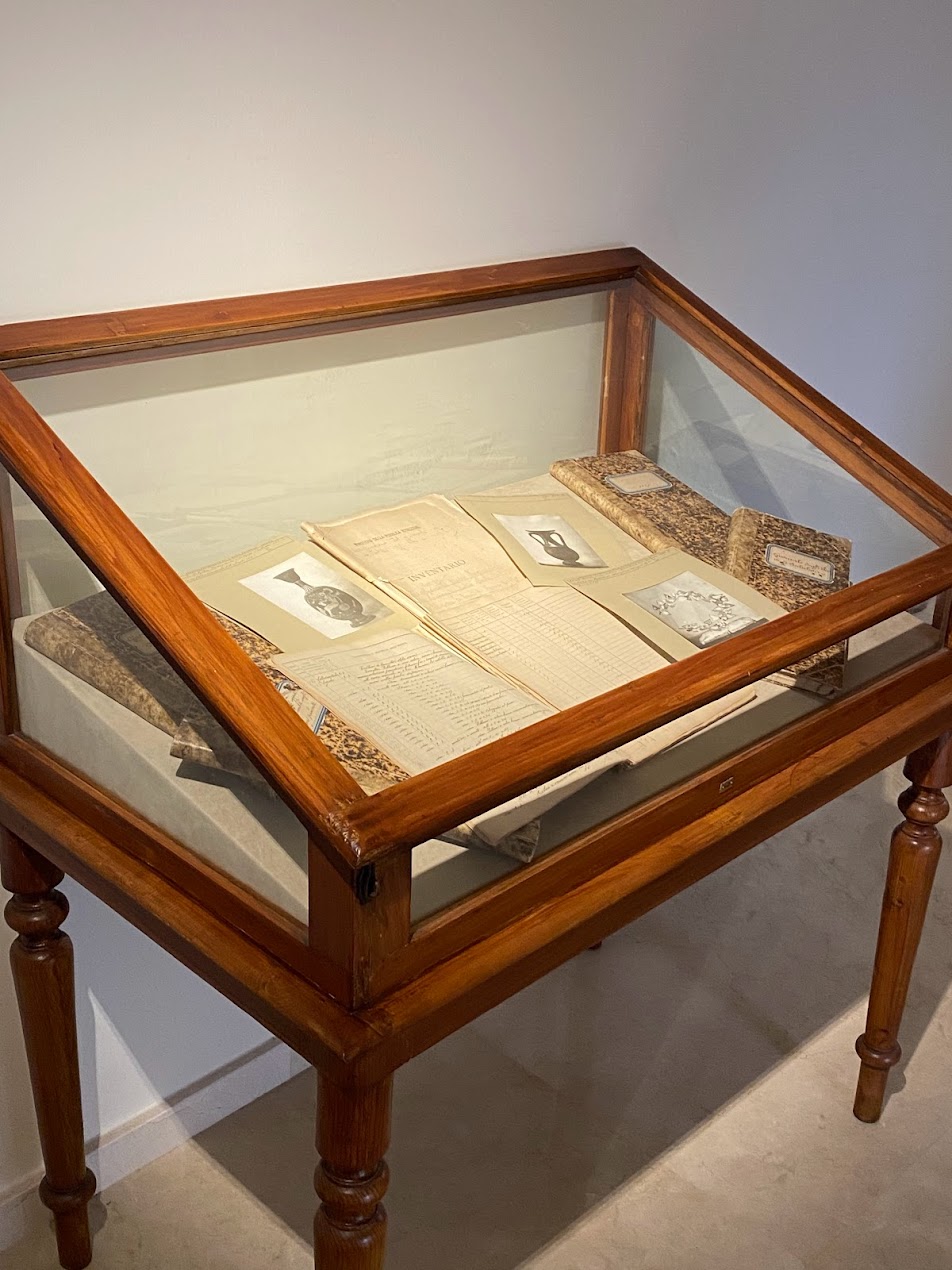
Provenance on view
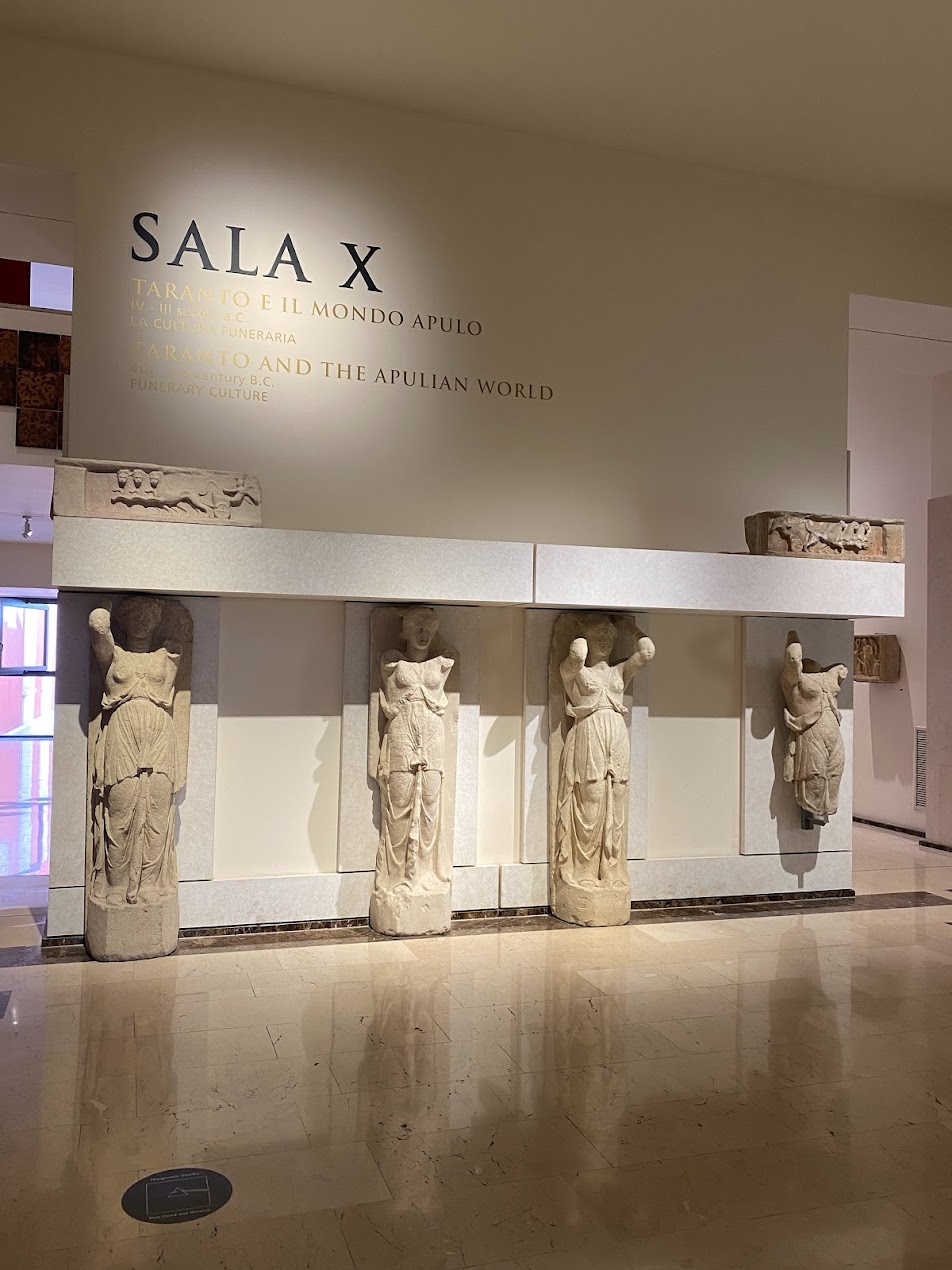
Beautiful entryways on each floor

Context with a photograph
by Amineddoleh & Associates LLC | Aug 15, 2022 |
Do you remember The Goonies, the 1985 Spielberg film about a shipwreck that made amateur treasure-hunters out of an entire generation? It turns out that the film may have been inspired by a real-life shipwreck. In 1693, the Spanish galleon Santo Cristo de Burgos mysteriously disappeared while en route to Mexico from the Philippines.
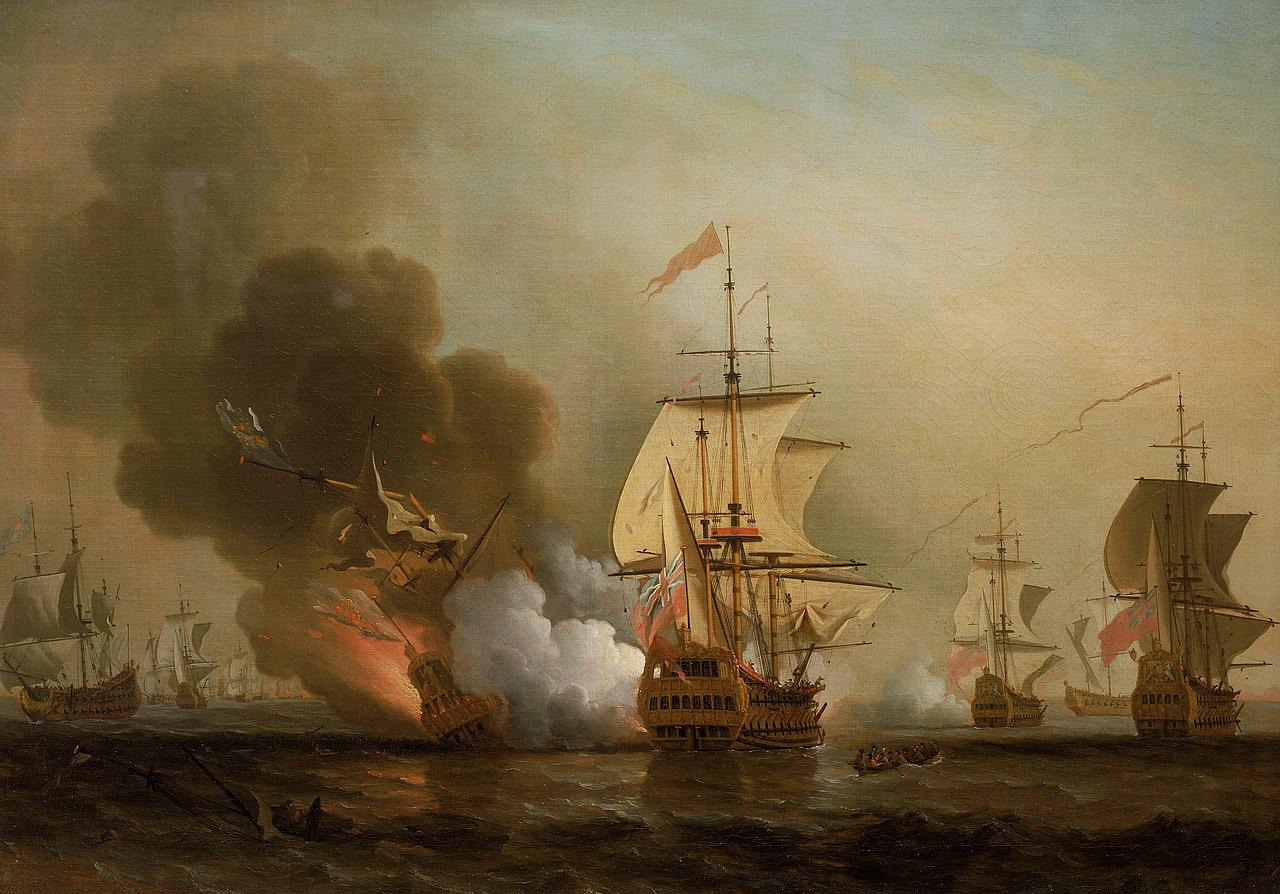 Historians have long searched for answers about the ship’s tragic fate, and they may have recently found them washed ashore on the Oregon coast. Large pieces of timber discovered by beachcombers sparked an incredible recovery effort, which has produced further evidence that Astoria, Oregon is where the Santo Cristo de Burgos met its end.
Historians have long searched for answers about the ship’s tragic fate, and they may have recently found them washed ashore on the Oregon coast. Large pieces of timber discovered by beachcombers sparked an incredible recovery effort, which has produced further evidence that Astoria, Oregon is where the Santo Cristo de Burgos met its end.
Unlike its fictional counterpart in The Goonies, the real-life Santo Cristos de Burgos is not believed to have been transporting a pirate’s treasure. However, the recovery of the ship gives a nod to our favorite fictional motley crew, and inspires us to ponder questions of ownership when an underwater shipwreck is discovered by a private citizen. Specifically, what are the legal, financial, and cultural dynamics at play when a salvor brings a shipwreck to the surface?
The answer may be surprising.
The Goonies may have led you to believe that the finders keepers rule applies to pirate treasure Unfortunately, in practice, a person that salvages items from a ship or that have been lost at sea (also known as a salvor) may lose the gold and the glory. This raises the question: what should a salvor expect to receive if he or she successfully unearths a sunken ship? Should Mikey’s family rest easy with its bag of recovered “rich stuff”? Or should older brother Brandon get to mowing his 377th lawn? To answer those questions, a few laws come into play.
Salvage Law
Traditional principles of salvage law dictate that the salvor of an underwater artifact may claim possession if the artifact has been abandoned (for example, Ariel’s grotto of “things” in Disney’s The Little Mermaid are her gadgets and gizmos for keeps, if she is able to demonstrate abandonment by the original owners). Even if an artifact has not been proven to be abandoned, the salvor may still recover under this law through a “salvor’s award” given by the state. This award can be substantial, reaching as high as 90% of the total value of the recovered property.
Recovering shipwrecks
The recovery of shipwrecks, in contrast to underwater artifacts, tends to be governed by a combination of federal laws (such as the Abandoned Shipwreck Act and the Sunken Military Craft Act), various state statutes (though these vary depending on the state; Nebraska, for example, has limited salvage laws, as not many shipwrecks are recovered in the Cornhusker State), and international law. For example, the UNESCO Convention on the Protection of the Underwater Cultural Heritage mentions the law of salvage and the law of finds in its Article 4.
These laws heavily tip the scales in the favor of state, federal, and even international interests over a salvor’s potential payout. If a salvor does bring a claim to a shipwreck and relies on traditional salvage law, the salvor’s claim will likely lose to the challenger under these tests, because the burden to show abandonment (crucial for a salvor) is subject to a higher standard.
The Abandoned Shipwreck Act
 Under the Abandoned Shipwreck Act (43 U.S.C. §2105-06) (which claims ships found more than 22 km offshore as federal property), a salvor who wishes to claim ownership of a recovered shipwreck must prove both a long period of no use or search by the original owner and the express intent to abandon.
Under the Abandoned Shipwreck Act (43 U.S.C. §2105-06) (which claims ships found more than 22 km offshore as federal property), a salvor who wishes to claim ownership of a recovered shipwreck must prove both a long period of no use or search by the original owner and the express intent to abandon.
Courts are increasingly reluctant to find that the original owner of property has exhibited an express intent to abandon, particularly when the technologies used to recover these centuries-old shipwrecks today did not exist at the time of the alleged abandonment.
Moreover, courts have been impressed by parties who immediately reclaim ownership when news of the recovery is made public, even when the interested party has not actively been searching themselves.
This was the case in People ex rel. Illinois Historic Preservation Agency v. Zych. There, the court ruled in favor of an insurance company claiming the interest to the recovered vessel Lady Elgin. The court’s decision turned on the fact that the company (who was responsible for covering the ship’s voyage) produced centuries-old documentation of a paid insurance claim (dated prior to the invention of the telephone) once the suit was underway. This not only won the insurance company rights to the ship, it also validated the longevity and thoroughness of their internal filing system.
The Sunken Military Craft Act
Even assuming a salvor can surmount the obstacles posed by the Abandoned Shipwreck Act, our treasure hunter may still stumble when faced with the Sunken Military Craft Act (2004).
This Act awards possession of any vessel on a military mission to the ship’s country of origin, even if the country does not attempt to claim ownership until centuries later. While this seems like an easily recognizable classification, it presents an unusual challenge, because most of the ships coming to America in its early days contained some kind of artillery on board for the safety of the crew (and, possibly, a bit of pillaging on the side). That means that most any ship carrying cannons or other traditional weaponry could feasibly qualify under this test, leaving the salvor with no rights in the face of an interested claimant nation.
The UNESCO Underwater Heritage Convention
Finally, even if the salvor manages to maintain rights in the vessel after all of the aforementioned tests, the claim may still be lost when faced with the UNESCO Convention on the Protection of Underwater Cultural Heritage, an international treaty protecting underwater cultural heritage. Unfortunately for salvors hoping to receive a quick pay-out, Article 4 of this law abandons the law of salvage completely, unless the interested country authorizes the salvage in accordance with the treaty and whatever is recovered is given the highest protection under the applicable country’s law.
Even though the United States is not a party to this treaty, many nations who colonized the United States are, including Italy, Spain, and France. This means that it is certainly an important law that salvors should be aware of, lest they be caught unawares, because of the sheer number of ships lost by these colonizing nations at that time.
What’s at stake?
Finding a shipwreck and recovering a bounty is not simply about saving one’s family from financial ruin, as was the case for Mikey and his gems. Proper recovery of the cultural heritage embedded in shipwrecks, as well as the preservation of priceless pieces of history, is essential to constructing a comprehensive narrative of global history. Things that traditional salvors may discard, accidentally destroy or damage, or overlook – such as pieces of fabric, newspaper, and even teeth and nails – are prized by states, nations, and archaeologists due to their incredible insight into the lives and societies of the people who sailed the ocean blue. And so, treasure hunting – while thrilling – if not done properly, may come at an incredible cost.
So, if you do find a treasure map in your attic and begin your own quest to recover galleons from a shipwreck, consider the balance of state, federal, international, and cultural interests at play. And, before you call the bank with that bag of jewels to save your home from foreclosure, call an art and cultural heritage law attorney to protect your rights.
by Amineddoleh & Associates LLC | Aug 15, 2022 |
Our founder, Leila, was quoted in the Washington Post, discussing the challenges facing nations making demands for the repatriation of stolen cultural heritage. Read the article HERE.
 Of course, this is devastating news to families seeking to reclaim an important piece of family heritage. If a museum denies heirs’ claims, they may proceed to file litigation. One high-profile example is Gustav Klimt’s portrait of Maria Altmann, titled
Of course, this is devastating news to families seeking to reclaim an important piece of family heritage. If a museum denies heirs’ claims, they may proceed to file litigation. One high-profile example is Gustav Klimt’s portrait of Maria Altmann, titled  Decades of case law in the U.S. indicate the difficulties facing claimants. Recent cases against New York museums resulted in wins for the institutions, yet not due to the merits of each respective case. Rather, the Museum of Modern Art squeaked out wins through a confidential
Decades of case law in the U.S. indicate the difficulties facing claimants. Recent cases against New York museums resulted in wins for the institutions, yet not due to the merits of each respective case. Rather, the Museum of Modern Art squeaked out wins through a confidential 


 MArTA is one of Italy’s national museums. It was founded in 1887, and is housed on the site of both the former Convent of Friars Alcantaran and a judicial prison. Although most architectural structures from the Greek era in Taranto did not stand the test of time, archaeological excavations have yielded a great number of objects from Magna Graecae. This is due to the fact that Taranto was an industrial center for Greek pottery during the 4
MArTA is one of Italy’s national museums. It was founded in 1887, and is housed on the site of both the former Convent of Friars Alcantaran and a judicial prison. Although most architectural structures from the Greek era in Taranto did not stand the test of time, archaeological excavations have yielded a great number of objects from Magna Graecae. This is due to the fact that Taranto was an industrial center for Greek pottery during the 4










 Historians have long searched for answers about the ship’s tragic fate, and they may have recently found them washed ashore on the Oregon coast. Large pieces of timber discovered by beachcombers sparked an incredible recovery effort, which has produced further evidence that Astoria, Oregon is where the
Historians have long searched for answers about the ship’s tragic fate, and they may have recently found them washed ashore on the Oregon coast. Large pieces of timber discovered by beachcombers sparked an incredible recovery effort, which has produced further evidence that Astoria, Oregon is where the  Under the
Under the